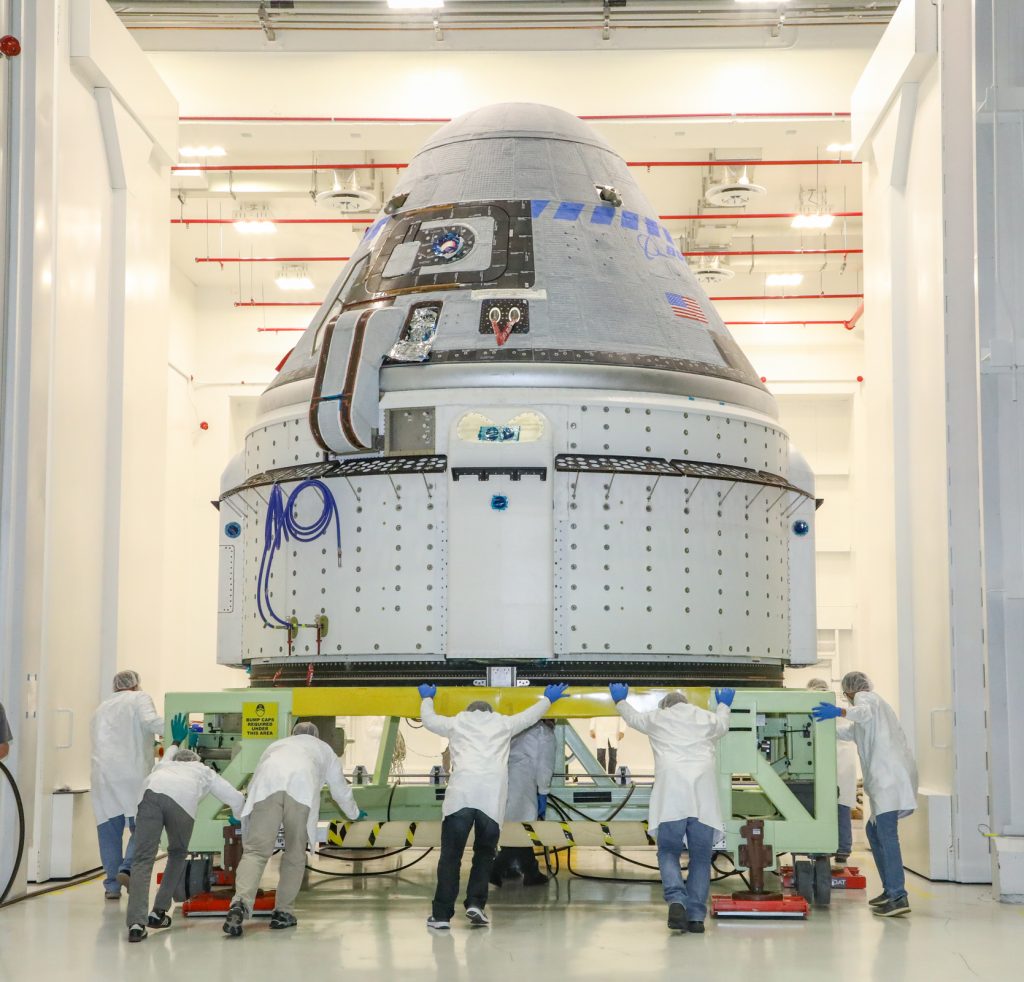
NASA and Boeing are preparing for the next step in NASA’s Commercial Crew Program on Thursday, Nov. 21, as the CST-100 Starliner spacecraft begins its transport for integration on a United Launch Alliance (ULA) Atlas V rocket ahead of Boeing’s uncrewed Orbital Flight Test to the International Space Station.
During the operation, the fueled Starliner will be moved from Boeing’s Commercial Crew and Cargo Processing Facility at Kennedy to ULA’s Space Launch Complex 41 Vertical Integration Facility on Cape Canaveral Air Force Station. Later the same day, the spacecraft will be stacked on top of an Atlas V rocket for final processing ahead of the launch.
Boeing’s uncrewed flight test, which is targeted for Dec. 17, will provide valuable data on the end-to-end performance of the rocket, spacecraft and ground systems, as well as, in-orbit and landing operations. The data will be used toward certification of Boeing’s crew transportation system for carrying astronauts to and from the space station.
NASA’s Commercial Crew Program is working with the American aerospace industry through public-private partnerships to launch astronauts on American rockets and spacecraft from American soil for the first time since 2011. The goal of the program is safe, reliable and cost-effective human space transportation to and from the International Space Station. This could allow for additional research time aboard the station and increase the opportunity for discovery aboard humanity’s testbed for exploration, which includes sending astronauts to the Moon and Mars.
